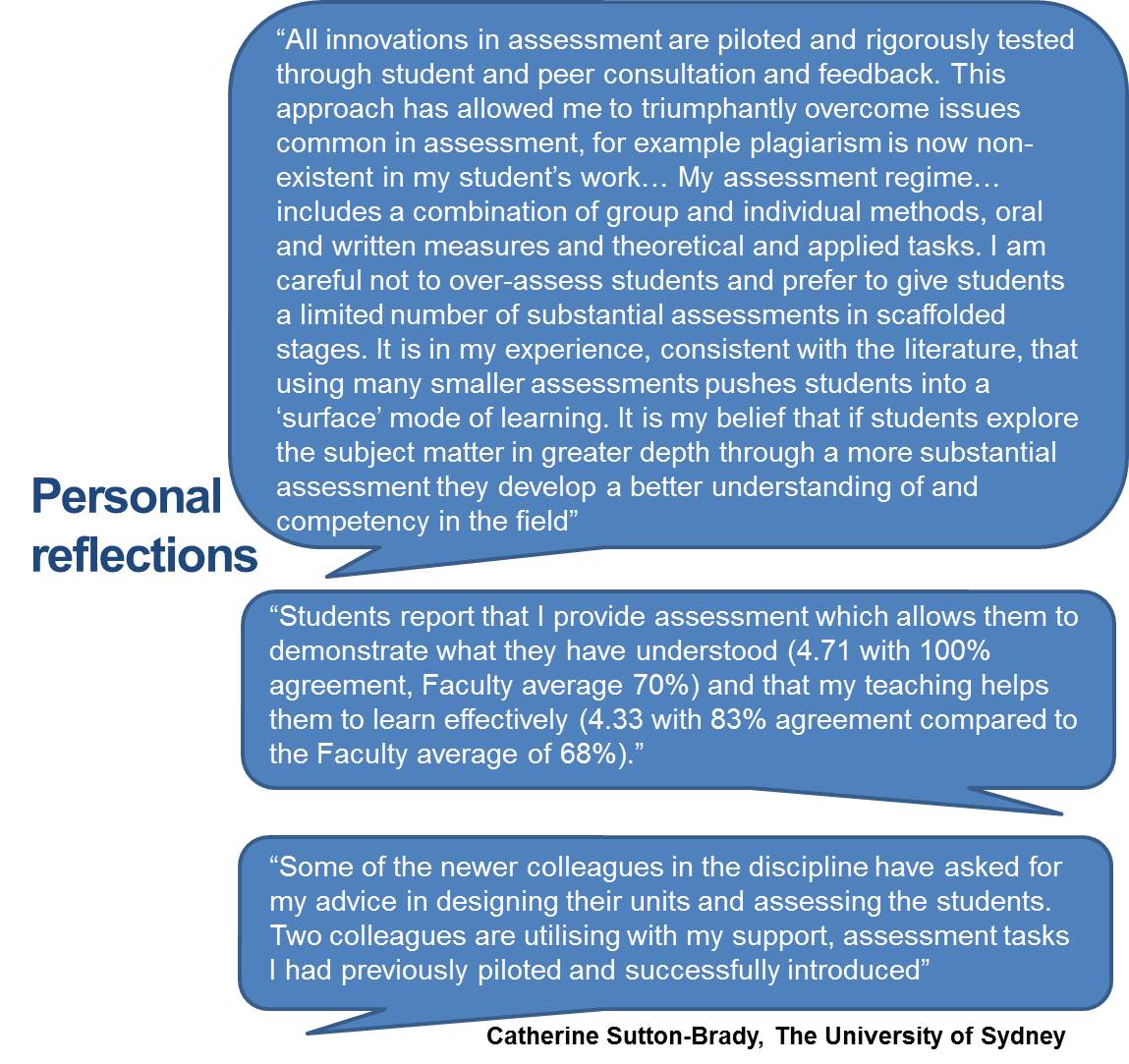Criterion 3
Exemplars
Criterion 3 | Assessment and giving feedback to students
Exemplar 1 – Bioassess
The Bioassess website is an excellent source of strategies, tips and examples of good practice in assessment. The website presents a comprehensive picture of assessment practice and learning priorities in the biological sciences and is an excellent source of inspiration regardless of discipline because the principles of assessment embedded are applicable to all disciplines. The resources have been developed through consultation with university staff and students about their experience and approaches that they found effective. For each type of assessment described; different approaches, provision of feedback, issues, strategies and generic skill development is discussed and authentic examples are provided by academic staff from across Australia.
Harris, K-L., Krause, K., Gleeson, D., Peat, M., Taylor, C. & Garnett, R. (2007). Enhancing Assessment in the Biological Sciences: Ideas and resources for university educators. Available from, www.bioassess.edu.au
Exemplar 2 – Peerwise
PeerWise is an online repository where students can develop and share multiple-choice questions with other users; who answer, evaluate and discuss the questions and suggested answers. Typically courses start with an empty repository that gradually grows as the course progresses. PeerWise enables students to compare their performance and understanding with that of other students studying the same material, and provides instructors with feedback on student understanding. Teachers are able to view the identity of authors and have the ability to delete inappropriate questions, however, in practice, moderation is rarely necessary and minimal staff involvement is required.
Peerwise. (2013). Available from, http://peerwise.cs.auckland.ac.nz/
Exemplar 3 – Case studies from Griffith University
This directory of case studies demonstrates good practice in assessment across a broad range of disciplines.
Good Practices in Assessment; case studies. Available from, http://www.griffith.edu.au/learning-teaching/teaching-and-learning/assessment-feedback-moderation/good-practice
Exemplar 4 – Catherine Sutton-Brady, The University of Sydney
In this teaching award application Catherine demonstrates how her design and execution of assessment tasks is varied, effective and innovative. She provides examples of assessment she has used and explains her scholarly and informed approach to assessment design. She provides evidence to support her claims, including; student survey results, student and peer feedback and the adoption of her ideas by others.
The University of Sydney. (2013). Recipients of Excellence Awards. Available from, http://sydney.edu.au/business/learning/staff/funding_and_recognition/awards/award_recipients


